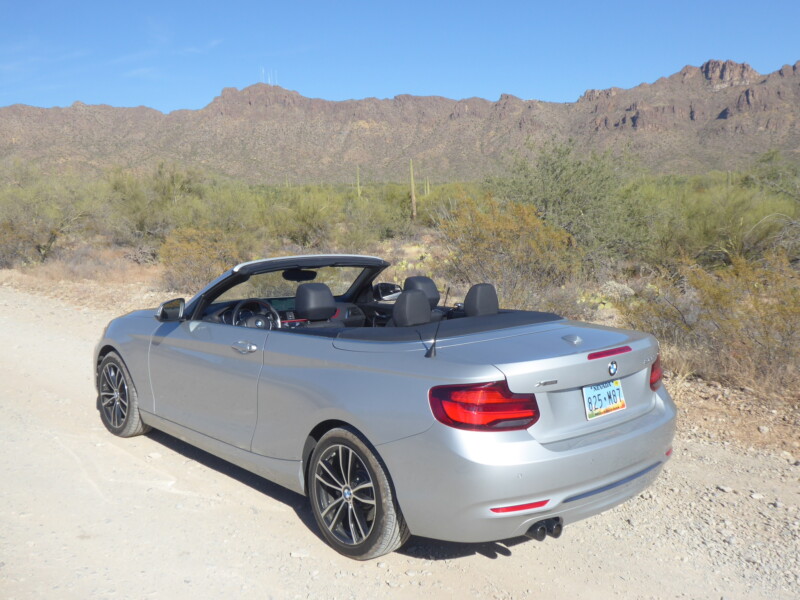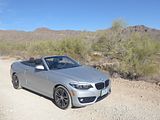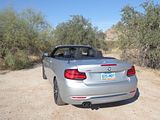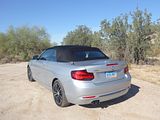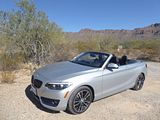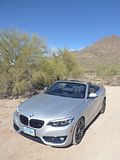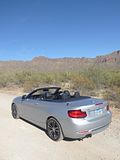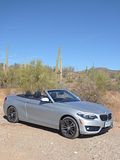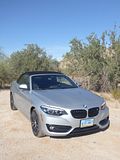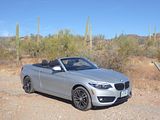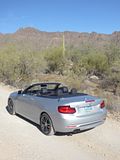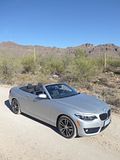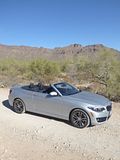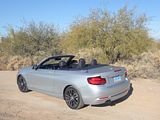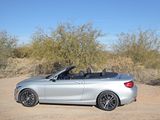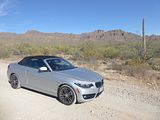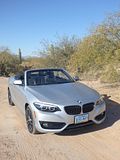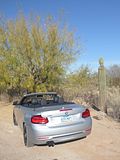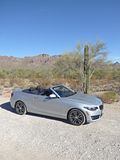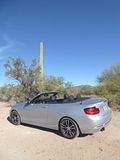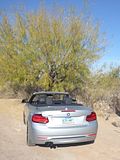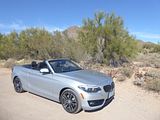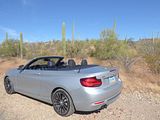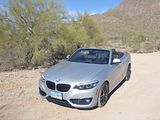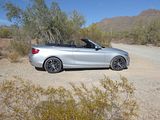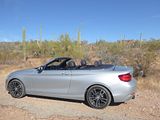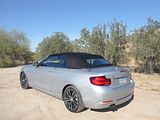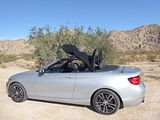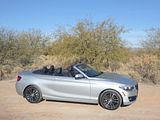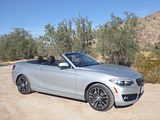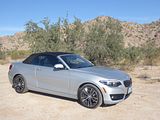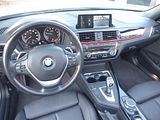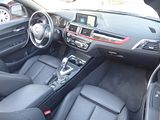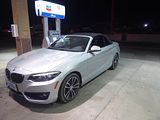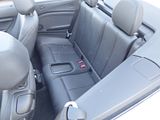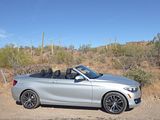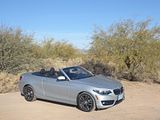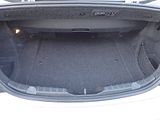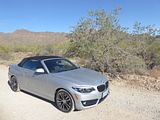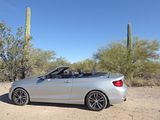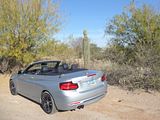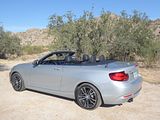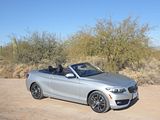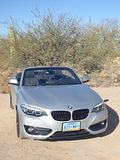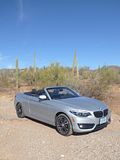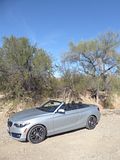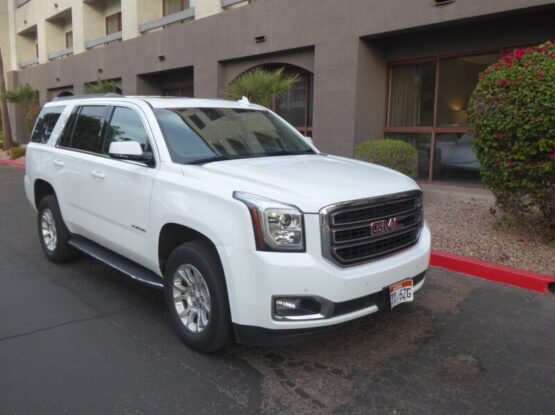For almost as long as there have been cars, there has been a significant market for something which prioritises style over pure utility, and the car makers have responded to this with coupe and convertible models, often very obviously based on their volume-selling two and four door saloon and hatchback models. Ford proved, in Europe, beyond any doubt with their Capri promoted as “the car that you aways promised yourself” that there was a good market for something more stylish, and in the 1970s almost every volume manufacturer followed suit. For sure you did trade off a certain amount of rear seat space and room in the boot, but this seemed to be a price that many were prepared to pay. It was not just volume manufacturers who went down this route, as those who by dint of reputation could charge more for their cars, those who we think of now as “premium”, could and did go much the same way. BMW are just one example of this. When the E30 generation 3 Series gained four doors, the 2 door model was gradually repositioned as a coupe, more obviously so at model chance time in 1991 with the E36 car, and taking heed of the re-emergence of the cabriolet or convertible format which was kicked off by the Golf Cabrio of 1979, they also introduced their own factory-produced model rather than leaving it to specialists like Baur to produce the open-topped car. As successive 3 Series cars got ever larger, it was no surprise when a new entry level car, the 1 Series came in underneath it. The first 1 Series models were produced solely as hatchbacks, but for the second generation cars, the F20 generation, the range was enlarged to include first a coupe and then a convertible. They’ve been on sale now since late 2013 and have found a loyal following especially with the M2 version of the car.
Hertz bought quite a lot of BMW models for their US fleet in 2020, partly as a result, so I understand, of customer demand. Among them was the 2 Series, solely in Convertible guise. Not surprisingly, these have proved popular among their customers in those parts of America that are blessed with a climate where top-down motoring is not just possible but really rather desirable, That certainly extends to California and Arizona, the two States where I tend to spend my US time, so whilst I had been seeing a few of these cars parked up every day, generally they were ear-marked for a customer who had booked one explicitly. But in yet another week in Phoenix when car availability was quite limited, it proved yet again to be the case that almost whatever is freshly washed and checked gets put in the Presidents’ Circle area and that included a 230i Convertible. With memories of aa day with another open-topped BMW model, the M4, fresh in my mind, and the forecast for another sunny and warm day, I raced over to the bay where it was being parked, before anyone else beat me to it, keen to see what I thought of the M4’s smaller brother.
As this was a convertible, of course one of the priorities was to lower the roof, and it could not be simpler. All you need do is press a button and wait for less than 20 seconds for it to fold down and out of the way. With the top duly lowered, as long as the side windows are up, it is perfectly possible to drive at freeway speeds without any buffeting, though of course it will be quite a struggle to hear the audio system.
A lot of modern engines fail to sound particularly interesting, but the 2 litre four cylinder unit in this BMW is among the worst such offenders. I thought it sounded awful when starting it up, almost diesel like in the noises that it made no doubt accentuated by the fact that the first time I drove the car entailed starting it in the enclosed space of the Phoenix Airport rental car garage. Sadly, the noise emanating from under the bonnet did not get much better once the car was warm or when underway. Whilst the noises were not good, fortunately, in other respects it did impress. Despite the name, a 230i means a four cylinder 2 litre unit these days and in this car it puts out 240 bhp. The car feels, and indeed is rapid, with strong acceleration available throughout the rev range. The gearbox works smoothly, so the car always seemed to be in the optimum ratio for what I wanted, and with 8 speeds, the upper gears ensure that the engine is not working hard at all when cruising at a steady speed, which meant that engine noise levels were low. I covered 290 miles in the day that I had the car and it needed 9.6 gallons to fill it, which computes to 30.2 mpg US, or 36.0 mpg Imperial, a good result, especially considering the performance on offer.
The British press rave endlessly about the BMW driving experience, and yet most of the models I’ve driven, admittedly usually from the lower part of their respective model ranges, have never left me feeling that wow-ed. Steering these days tend to be light and somewhat lacking in feel, especially around the straight-ahead position. This 230i seemed better than most, with pretty good feel no matter where the wheel was pointed. For sure the car handles well, with plenty of grip, no body roll and a sense of fun when tackling the corners. The body felt pretty rigid so there was no evidence of the scuttle shake you sometimes get with convertibles. Equally impressive, pleasingly, was the ride, generally not the case with BMW models on run flat tyres and M Sport suspension. This one had neither of these, with just relatively high profile 205/50 R17 tyres to connect to the road, and it seemed all the better for it. The brakes were powerful and seemed effective. There is a traditional pull-up handbrake fitted between the seats. Standard driver assistance features include a rearview camera, front and rear parking sensors, driver drowsiness monitoring, daytime pedestrian monitoring, forward collision warning with automatic emergency braking, and lane departure warning. Visibility when the roof down is excellent, but it is not so good when it is up with relatively small rear side windows and quite a sizeable amount of roof material, so over the shoulder views at oblique junctions require some care. There is the mandated rear-view camera, of course, and in any case the tail is quite stubby so parking up is not that hard.
The 230i looks and feels very much like a typical BMW inside. Overall quality levels are pretty decent. There is stitched leather on some of the surfaces and the plastics used are generally of good quality, though I thought the red inserts look somewhat gash, but I am sure that they will appeal to others. There is the usual chunky steering wheel which is fatter than I would like, but it is leather wrapped and otherwise pleasant to hold. There is a simple and unfussy instrument cluster, with two large dials in the binnacle and smaller fuel level and economy gauges inset in the larger speedometer and rev counter. As with all modern BMWs, the odometer is positioned right at the bottom of the central part of the cluster and with my driving position, I cannot see it, which is a bit annoying as the other ergonomics are pretty good. You get a pair of very chunky column stalks for indicators and lights, and the usual collection of buttons on the steering wheel for cruise control and audio repeaters. Lights operate from a rotary dial on the dash to the left of the wheel. There is a relatively small 6.6” colour screen incorporated in the centre of the dash, which surprisingly does not have a touch interface. There are buttons on the dash for many of the functions and you also get the iDrive control wheel and buttons in the centre console which means that this is one of the easiest of systems to operate. Included as standard is Satellite XM radio but if you want navigation and Apple Car Play these are only available as options. They were on the test car as part of the premium Package which had been specified. Android Auto. Is not available. Beneath the screen are buttons and knobs for the dual zone climate control.
This is quite a low set car, so it does feel like you are sitting in it rather than on it. The seats are electrically adjusted and there is plenty of movement fore and aft. As with most BMWs there is an extensible seat bolster for those who are longer of the thigh bone. The test car featured seat heating, which is an option, a part of the Premium Package. Seat trim is a synthetic leather which could just about pass for the real thing, though it will never win prizes for its quality feel. There is a two position memory to store the desired position once you’ve found it.
Rear seat space is very tight. It is definitely for two passengers only, with a moulded stowage tray in the central part of the seat, but even they are not likely to be very comfortable as the backrest is very upright. Legroom is only likely to prove adequate if the front seats are set well forward. Obviously, headroom won’t be a challenge if the roof is down, but when it is in place, there’s not that much clearance for your head, either. Getting in and out requires a certain amount of athleticism. It’s a lot easier with the roof down, of course, but with it in situ, there’s not much clearance in any direction. Oddment space is limited to the tray between the seats and nets on the back of the front seats.
The boot is also small, and there is a relatively small opening so getting a large suitcase in would be quite a challenge. As with many open-topped cars, if you want to lower the roof, then you will sacrifice some of the boot space, and what remains is more difficult to access and limited in height. You can create more space as the rear seat backrests fold flat. Inside the cabin there is a modestly-sized glovebox, some small door pockets a useful tray in front of the gearlever and an armrest cubby.
When BMW replaced the E82 and E88 model cars, the 1 Series Coupe and Convertible respectively, they used the 2 Series label for the new cars, much as they also sought greater differentiation further up the range by separating out to the 3 and 4 Series. More recently the 2 Series ranges has got more complicated as in addition to the MPV-like 2 Series Active Tourer and Gran Tourer which are anything but sporty, a 2 Gran Coupe was added to the range, but this is based on the third generation 1 Series car and has a different front wheel drive platform. That makes for an extensive range of 2 Series cars, especially in Europe where there are lots of engine choices. In the US, there are rather fewer. Ignoring the Gran Coupe, then there are currently 4 Coupe models and just 2 cars with the Convertible body. The start point of the US range is the 230i which is available in coupe and convertible body styles. It has a 248 bhp turbocharged 2.0-litre four-cylinder engine, rear-wheel drive, and either a six-speed manual or an eight-speed automatic transmission. The convertible only comes with the eight-speed automatic. BMW’s all-wheel drive is an available option and indeed was fitted to my test car. Standard features include dual-zone automatic climate control, push-button start, proximity keyless entry, synthetic leather upholstery, front sport seats, 10-way power-adjustable front seats, and the iDrive infotainment system with a 6.5-inch display, a seven-speaker stereo, HD Radio, Bluetooth, and a USB port. Standard active safety features include a rearview camera, front and rear parking sensors, driver drowsiness monitoring, daytime pedestrian monitoring, forward collision warning, automatic emergency braking, and lane departure warning. The M240i trim is also available in coupe and convertible body styles. It has a 335 bhp turbocharged six-cylinder engine and either a six-speed manual or an eight-speed automatic transmission. Rear-wheel drive is standard, and AWD is available. In addition to the base 230i trim’s features, the M240i comes with sporty exterior flourishes, a rear spoiler, 18” wheels, an adaptive suspension, M Sport brakes, a sport exhaust, upgraded brakes, a moonroof (in coupe models), an auto-dimming driver-side and rearview mirror, a sunroof (coupe only) and satellite radio. The M2 Competition is only available as a coupe. It comes with a 405 bhp twin-turbocharged six-cylinder engine, rear-wheel-drive, and a six-speed manual transmission. You might find a model with a seven-speed dual-clutch automatic transmission. Standard features include genuine leather upholstery, heated front seats, an 8.8-inch touch screen, a 12-speaker Harman Kardon stereo system, Apple CarPlay, and navigation. At the top of the range is the limited-edition M2 CS. This delivers the best performance in the 2 Series lineup. Available only as a coupe, it comes with a 444 bhp version of the M2 Competition’s engine, along with rear-wheel drive and a six-speed manual transmission. Some models may have a seven-speed dual-clutch automatic transmission. Other performance upgrades include a locking differential and carbon fibre components to reduce weight. When it comes to features, this trim is similar to the M2 Competition trim. Needless to say, there are long lists of options. The test car featured the Premium package, which gets you a navigation system, BMW remote services, Apple CarPlay, heated front seats, and a heated steering wheel. Other add-ons include adaptive headlights, adaptive cruise control, leather upholstery, a universal garage door opener, a wireless charging pad, and a 12-speaker Harman Kardon premium audio system.
If you are in the market for a small four seater convertible, there are very few choices apart from this BMW, with Audi having discontinued the open-topped A3 and Mercedes never having had a car of this type in the range, concentrating instead on the strictly two-seater SLC (former SLK) model. The MINI is about the only other option and that car has even less space in it than the far from roomy BMW. Forego the opening roof and there is a bit more choice, but not a lot, as the format of a small coupe does not seem to be a priority for manufacturers or buyers. If you are one of those people, then the BMW could well suit you pretty well. In 230i guise it goes well, is decently economical, steers and handles nicely, and devoid of run flats and M Sport suspension, it even rides quite well. The packaging means that this is really a car for two people and perhaps small children, but those two adults would be pretty comfortable, and the openable roof has definite advantages especially in a climate like Arizona’s where you can go top-down pretty much every day until it gets too hot in the height of summer.

